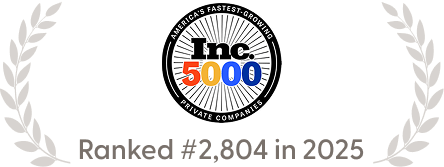The global economy is bracing for increased volatility in 2025, with JPMorgan suggesting a 60% chance of recession and heightened uncertainty across markets.
Sixty. Percent.
When headlines are dominated by talk of tariffs, inflation concerns, and economic uncertainty, it's natural to focus on immediate cost-cutting measures. But what if this moment of constraint could unlock your organization's operational potential?
At Kalon, we've seen firsthand how market pressure can catalyze the most meaningful transformations. While your competitors are making reactive cuts, thoughtful operations leaders are using this time to build the foundation for sustainable, scalable growth. Research from Harvard Business Review shows that only 9% of companies actually emerge from recessions stronger than before, and these winners share a common approach: they focus on improving operational efficiency rather than just cutting costs. The companies that emerge stronger from uncertain times aren't just those that cut the deepest… they're the ones that cut the smartest.
This isn't about finding quick fixes or surface-level savings. It's about understanding that constraint truly is the father of invention, and that thoughtful technology design can transform your biggest operational headaches into competitive advantages. When budgets are tight and every dollar matters, that's precisely when you need to think most strategically about how your team spends its time.
The hidden cost of "getting by" with manual processes
When times are good and growth is steady, it's easy to overlook the inefficiencies that exist in your daily operations.
Your team has found workarounds, developed informal processes, and learned to navigate the gaps between your various systems. Everyone knows that Sarah manually exports data from three different platforms every Monday morning to create the weekly sales report. Everyone accepts that the support team spends hours each week copying information between systems. It's just "how things work."
But market volatility has a way of making these hidden costs impossible to ignore. Operational efficiency directly impacts a company's bottom line, and businesses can significantly lower their operational costs by reducing waste and optimizing processes.
When revenue becomes uncertain and every expense is scrutinized, those hours spent on manual tasks start to feel expensive. More importantly, they represent opportunity cost, which is time your team could be spending on strategic initiatives, customer relationships, or innovation.
.jpg)
Consider the true cost of these manual processes beyond just the immediate time investment. There's the mental fatigue that comes from repetitive tasks, the errors that inevitably creep in when humans handle data transfers, and the bottlenecks that form when key processes depend on specific individuals. Your most valuable team members — the ones with deep institutional knowledge and strong customer relationships — are spending their time on work that a well-designed system could handle automatically.
The operations leaders we work with often discover that what they thought were minor inefficiencies are actually significant drains on their organization's potential. A process that takes "just 30 minutes" each day represents over 120 hours annually. Multiply that across multiple team members and multiple processes, and you're looking at the equivalent of hiring another full-time employee—except instead of adding value, these hours are simply maintaining the status quo.
This is where constraint becomes opportunity. When you can't simply hire more people to handle the growing workload, you're forced to think differently about how work gets done. You start asking better questions: What if this didn't have to be manual? What if our systems could talk to each other? What if we could eliminate this step entirely?
How UpSwell transformed support staff into revenue drivers
Let’s talk about a poignant example of operational efficiency. UpSwell, a marketing agency specializing in automotive and fitness industries, faced exactly the kind of challenge that many growing companies encounter: they were growing fast and adding large, national accounts, but their existing processes couldn't keep pace with demand.
As UpSwell scaled, they did what most companies do—they hired support staff to help their sales team manage the increasing workload. These team members spent their days running reports, preparing presentations, and filling out forms. Essential work, but largely administrative. The bigger UpSwell grew, the more support staff they needed, and the more their operational costs increased alongside their revenue.
Instead of accepting this as the inevitable cost of growth, UpSwell partnered with us to examine their processes with fresh eyes. We redesigned and modernized their production management system and improved the performance of their custom software to allow them to serve larger accounts and their growing customer base.
The transformation wasn't just technical. It was strategic. We created user flows to identify the optimal way to allow sales reps to place orders for their largest customers and created a bulk upload process that allowed them to schedule mailings for hundreds of customers in a matter of minutes. Instead of having to make hundreds of different clicks, sales reps could upload a spreadsheet and walk through an import wizard to place their orders.

But perhaps the most significant change was what happened to those support staff members. Instead of running reports and filling out forms, they were able to move into higher-impact roles focused on customer retention and revenue generation. They became the people following up with existing customers, identifying upsell opportunities, and building the relationships that drive long-term business growth.
The result? UpSwell could handle significantly more volume without proportionally increasing its headcount. We did this by optimizing slow-running jobs and writing SQL stored procedures to reduce processing time for 1 million records from 6 hours to under 20 minutes. This speed improvement meant Upswell could process orders more quickly and continue to scale their print operations. More importantly, their team was energized by more meaningful work, their customers received better service, and their margins improved dramatically.
This transformation didn't happen overnight, and it didn't require a complete overhaul of their existing systems. By avoiding a complete re-write we were still able to make big changes while providing business continuity. It happened through careful analysis, thoughtful design, and strategic implementation, which is the kind of approach that turns operational challenges into competitive advantages.
Building scalable processes that grow with you
The UpSwell example illustrates a crucial principle: the best operational improvements don't just solve today's problems—they position you for tomorrow's opportunities. When market conditions improve and growth accelerates, you want to be ready to scale without dramatically increasing your overhead.
This requires a different mindset about operational efficiency. Instead of asking "How can we do this cheaper?" the better question is "How can we do this better?" Better usually means more efficiently, but it also means more accurately, more consistently, and in a way that your team actually enjoys. The long game also saves costs over time.
Modern businesses see automation as key to efficient and streamlined operations, with the scalability offered by cloud solutions proving invaluable as organizations grow. But automation without strategy is just expensive complexity. The key is identifying which processes will benefit most from automation and designing solutions that enhance rather than replace human expertise.
Start by mapping your team's actual workflows. This is important: this is not how you think they work, but how they actually work. Where are the handoffs between team members? Which steps require the most time? Where do errors typically occur? Which processes become bottlenecks during busy periods? This analysis often reveals surprising insights about where your biggest opportunities lie.
The most effective operational improvements follow a pattern: they eliminate manual work that doesn't require human judgment while freeing your team to focus on work that does. A well-designed system can automatically generate reports, but it takes human insight to interpret those reports and make strategic decisions. Technology can streamline data entry, but it takes human relationships to understand customer needs and build lasting partnerships.
Consider the broader implications of these improvements. When your team spends less time on administrative tasks, they have more mental energy for creative problem-solving. When your processes are more efficient, you can respond faster to customer needs and market opportunities. When your operations are more reliable, you can take on bigger challenges and more ambitious projects.
The companies that emerge strongest from periods of market volatility are those that use the pressure as a catalyst for fundamental operational improvements. They don't just cut costs: they eliminate waste. They don't just work harder: they work smarter. And they don't just survive the downturn: they position themselves to capture a disproportionate share of the growth when markets recover.
The path forward: from reactive to strategic
Market volatility will continue to be a reality for the foreseeable future. Policy uncertainty, geopolitical risks, and heightened macroeconomic volatility are expected to characterize 2025, with tariff announcements and stubborn inflation creating ongoing economic uncertainty. The question isn't whether your organization will face pressure — it's how you'll respond to that pressure.
The reactive approach is to make cuts and hope for the best. The strategic approach is to use this moment as an opportunity to build the operational foundation that will serve you for years to come. This means investing in processes, systems, and capabilities that will make your organization more resilient, more efficient, and more competitive.

But where do you start? The answer depends on your specific context, but there are some common patterns we see across successful transformations. Begin with processes that are both painful for your team and critical for your customers. Look for workflows that have grown organically over time and now involve multiple systems, handoffs, and manual steps. Identify bottlenecks that limit your ability to serve larger customers or handle increased volume.
Most importantly, involve your team in the analysis. The people doing the work every day often have the best insights about where improvements would make the biggest difference. They understand the workarounds, the pain points, and the opportunities that might not be visible from a management perspective. Making them partners in the process ensures that solutions actually solve real problems and that implementation goes smoothly.
Remember that operational efficiency isn't just about tech. It's about enabling your team to do their best work. The goal isn't to eliminate jobs, but to eliminate the parts of jobs that drain energy and enthusiasm. When you automate the mundane, you elevate the meaningful. When you streamline the routine, you create space for the exceptional.
The market volatility that feels like a constraint today can become the catalyst for operational excellence tomorrow. But only if you approach it strategically, thoughtfully, and with a clear vision of what's possible when constraint breeds innovation.
The companies that will thrive in the coming years aren't necessarily those with the biggest budgets or the most resources. They're the ones who use challenging times to build better systems, create more efficient processes, and position their teams for sustainable growth. They understand that operational efficiency is about creating the foundation for everything else you want to achieve.
Market uncertainty is inevitable, but how you respond to it and what you build during challenging times is entirely up to you.

.jpg)




.jpg)

